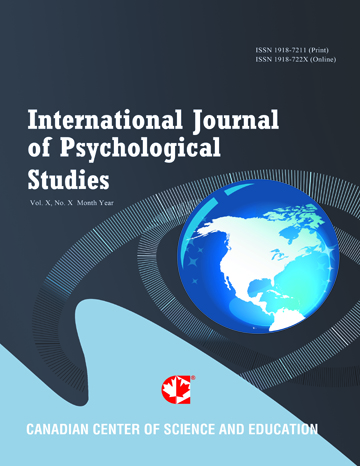The Effectiveness of a Multi-Dimensional Teaching Strategy on Students’ Attitudes and Level of Learned-Helplessness
- Amal Eldowah
- Sumyah Alnajashi
Abstract
Background: Learned helplessness can become a persistent problem that develops in response to a student’s lack of confidence and frustration with a certain course of study.
Aims: This study examined the effects that a teaching strategy that was designed to trigger intrinsic motivation components had on students’ attitudes toward an unpopular scientific subject and students’ learned helplessness as a general characteristic.
Sample: The participants consisted of 157 female undergraduate students.
Method: A teaching strategy that consisted of multi-dimensional intrinsic motivation components was delivered to one neuropsychology class of students, while a second class was taught exactly the same concepts via a traditional lecturing strategy. Two dependent variables were assessed: Attitude toward the neuropsychology course and learned helplessness. The self-rating scales were administered twice: Once at the beginning of the course and once at the end. An analysis of variance ANCOVA was used to compare the results of the two groups of students.
Results: The performance of the students in the experimental group was higher than that of students in the control group in terms of course grades. Furthermore, these students exhibited a more positive attitude to neuropsychology than the students in the control group. Learned helplessness decreased in the experimental group, and this was indicative of the fact that the new teaching strategy had a positive effect on motivational levels.
Conclusion: A teaching method that incorporates the components of intrinsic motivation can enhance students’ performance on a specific course and can improve their attitude toward completing that course.
- Full Text:
 PDF
PDF
- DOI:10.5539/ijps.v9n3p1
Journal Metrics
1. Citations (March 2025): 10975
3. i10-index (March 2025): 233
For details about the Journal Metrics, please visit the Google Scholar website.
Index
- AcademicKeys
- CNKI Scholar
- Elektronische Zeitschriftenbibliothek (EZB)
- Excellence in Research for Australia (ERA)
- GETIT@YALE (Yale University Library)
- Harvard Library E-Journals
- JournalSeek
- JournalTOCs
- LOCKSS
- MIAR
- Open Access Journals Search Engine(OAJSE)
- Open J-Gate
- PKP Open Archives Harvester
- SHERPA/RoMEO
- Standard Periodical Directory
- The Keepers Registry
- UCR Library
- Ulrich's
- Universe Digital Library
- WorldCat
Contact
- Barbara SunEditorial Assistant
- ijps@ccsenet.org
